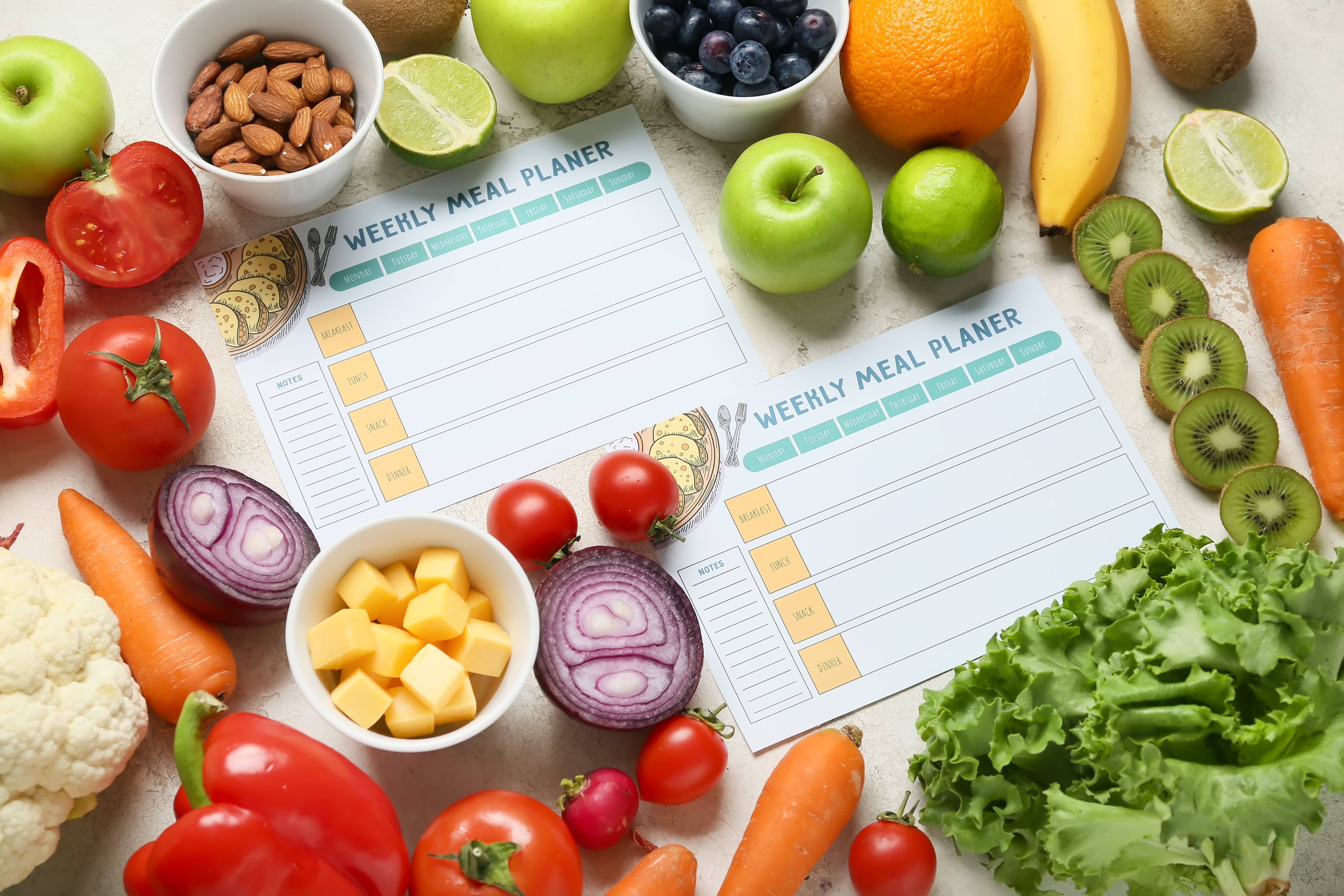
How to Build a Budget-Friendly Weekly Meal Plan

Why Meal Planning on a Budget Works
-
Save Money: Avoid impulse buys and wasted groceries.
-
Eat Healthier: Stick to nutrient-packed foods that align with your goals.
-
Save Time: Spend less time wondering what to eat and more time enjoying your meals.
-
Reduce Stress: Knowing what’s for dinner makes your week smoother and more manageable.
Step-by-Step Guide to Budget-Friendly Meal Planning
-
Take Stock of What You Have
-
Plan Around Sales and Seasonal Produce
-
Choose Budget-Friendly Ingredients
-
Proteins: Eggs, canned tuna, chicken thighs, and lentils.
-
Carbs: Brown rice, oats, sweet potatoes, and whole-grain pasta.
-
Veggies: Carrots, spinach, frozen mixed vegetables, and cabbage.
-
Healthy Fats: Peanut butter, olive oil, and sunflower seeds.
-
Batch Cook and Prep
-
Create a Simple and Repeatable Menu
-
Breakfast: Overnight oats, smoothies, or scrambled eggs on toast.
-
Lunch: Grain bowls, wraps, or leftover dinner.
-
Dinner: Stir-fries, sheet pan meals, or pasta with veggies.
-
Snacks: Yogurt with fruit, hard-boiled eggs, or hummus with carrots.
-
Stick to Your Shopping List
-
Embrace Leftovers
-
Roast chicken can become chicken salad wraps.
-
Leftover veggies can go into a frittata or soup.
Sample Budget-Friendly Meal Plan
Tips to Maximize Your Budget
-
Buy in Bulk: Staples like rice, oats, and beans are cheaper in bulk. Store them in airtight containers for long-lasting freshness.
-
Go Frozen: Frozen fruits and vegetables are often more affordable and just as nutritious as fresh.
-
DIY It: Make your own snacks like granola bars or energy bites instead of buying pre-packaged options.
-
Reduce Meat: Incorporate more plant-based proteins like lentils and beans to cut costs.
References
-
Drewnowski, A., & Darmon, N. (2005). "The Economics of Eating Healthy." Public Health Nutrition.
-
Harvard T.H. Chan School of Public Health. (2021). "Eating Healthy on a Budget."
-
Academy of Nutrition and Dietetics. (2020). "Meal Planning Tips to Save Money."
Meet Fitnexa, your AI-driven companion that turns everyday habits into a positive, uplifting journey. From effortless meal analysis (including recipe suggestions) to personalized coaching and real-time support, Fitnexa keeps you on track toward lasting wellness — so you can stay younger, live longer.
https://apple.co/4hr8JGW





Leave a comment
This site is protected by hCaptcha and the hCaptcha Privacy Policy and Terms of Service apply.